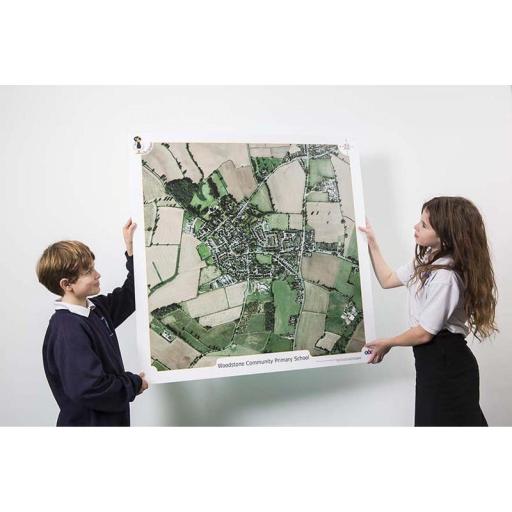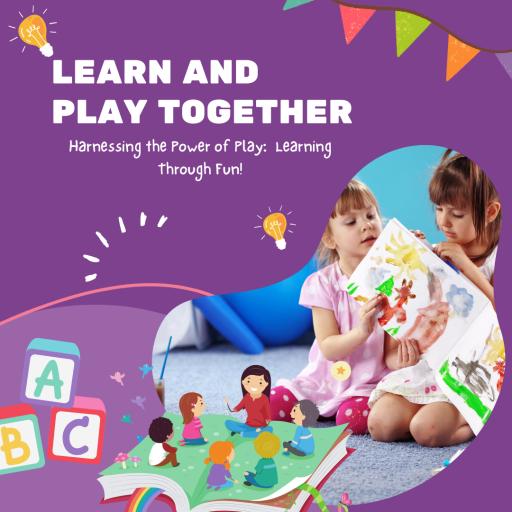Introduction:
Teaching Buddhism to primary school students can be a daunting task, especially for those who are unfamiliar with the religion's principles and practices. However, by using various tools and resources, educators can make the learning experience more engaging, interactive, and enjoyable for their students. This article provides a comprehensive teaching plan that incorporates different tools, including prayer wheels, wall hangings, resin Buddha, singing bowls, mala beads, prayer flags, offering bowls, lotus flowers, Majera symbols, and brass Om.
Lesson Plan:
I. Introduction to Buddhism (Duration: 30 minutes)
- What is Buddhism?
- Key principles of Buddhism (The Four Noble Truths and the Eightfold Path)
- The history of Buddhism
- Discuss the impact of Buddhism on the world
Buddhism is a major world religion that originated in ancient India and is based on the teachings of the Buddha, who lived in the 5th century BCE. The central teachings of Buddhism are aimed at helping individuals achieve inner peace and enlightenment, and ultimately, freedom from suffering.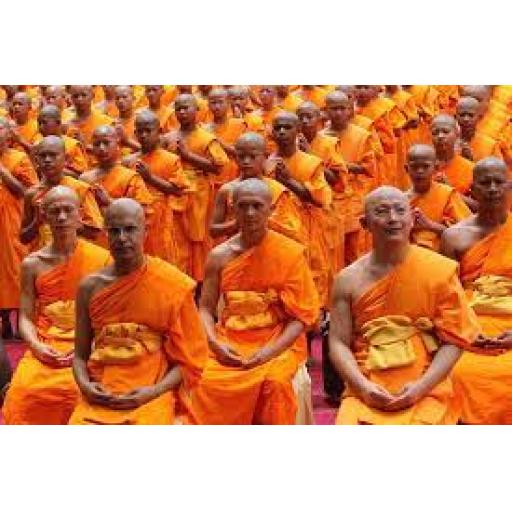
Key Principles of Buddhism:
The Four Noble Truths:
- The truth of suffering: All beings experience suffering.
- The truth of the cause of suffering: Suffering arises from craving and attachment.
- The truth of the cessation of suffering: Suffering can be ended by overcoming craving and attachment.
- The truth of the path to the cessation of suffering: The Eightfold Path leads to the end of suffering.
The Eightfold Path:
- Right Understanding: understanding the Four Noble Truths and the nature of reality.
- Right Intention: having positive and beneficial intentions.
- Right Speech: speaking truthfully, kindly, and constructively.
- Right Action: acting ethically and morally.
- Right Livelihood: earning a living in a way that is honest and does not harm others.
- Right Effort: making a consistent effort to improve oneself.
- Right Mindfulness: being aware of one's thoughts and emotions.
- Right Concentration: developing the ability to concentrate and focus the mind.
History of Buddhism: Buddhism originated in ancient India and was founded by the Buddha, also known as Siddhartha Gautama. After achieving enlightenment, the Buddha spent the rest of his life teaching his followers the principles of Buddhism. Buddhism spread throughout India and eventually throughout Asia, where it became a major world religion.
Impact of Buddhism on the World: Buddhism has had a significant impact on the world, particularly in Asia. It has influenced the culture, art, and philosophy of many countries, including India, China, Japan, and Thailand. Buddhism has also played a role in shaping modern mindfulness practices and the development of the psychology of happiness. The principles of Buddhism have also inspired social movements, such as the peace movement and the human rights movement.
Buddhism is a major world religion that is based on the teachings of the Buddha. Its key principles are the Four Noble Truths and the Eightfold Path, which aim to help individuals achieve inner peace and enlightenment. Buddhism has a rich history and has had a significant impact on the world, particularly in Asia, where it has influenced culture, art, and philosophy.
II. Using Prayer Wheels (Duration: 20 minutes)
- Explain the concept of prayer wheels in Buddhism
- Discuss how prayer wheels are used in Buddhist practices
- Demonstrate how to use a prayer wheel
- Allow students to practice using prayer wheels
- Encourage students to create their own prayer wheels

Prayer wheels are an essential part of Buddhist practices, particularly in Tibetan Buddhism. These cylindrical devices are filled with mantras or sacred texts written on scrolls and are spun in a clockwise direction to release the power of the prayers into the universe. The prayer wheels are believed to be a powerful tool for purifying negative karma, invoking blessings, and promoting spiritual development.
The practice of using prayer wheels dates back to ancient India, where monks would use wooden prayer wheels to recite mantras. Over time, the use of prayer wheels spread to Tibet, where it became an integral part of Buddhist practice. Today, prayer wheels can be found in Buddhist temples, monasteries, and households around the world.
The use of prayer wheels in Buddhist practice is based on the concept of merit. In Buddhism, merit refers to the accumulation of positive karma or spiritual energy that leads to spiritual growth and enlightenment. By turning the prayer wheel, the practitioner accumulates merit and purifies negative karma, leading to a more significant connection with the divine.
In addition to individual practice, prayer wheels are also used in group meditation and prayer. During these sessions, a large prayer wheel is spun by multiple people simultaneously, creating a powerful energy field that amplifies the effects of the mantras.
III. Wall Hangings (Duration: 20 minutes)
- Explain the significance of wall hangings in Buddhism
- Show examples of wall hangings and their meaning
- Allow students to create their own wall hangings with Buddhist symbols
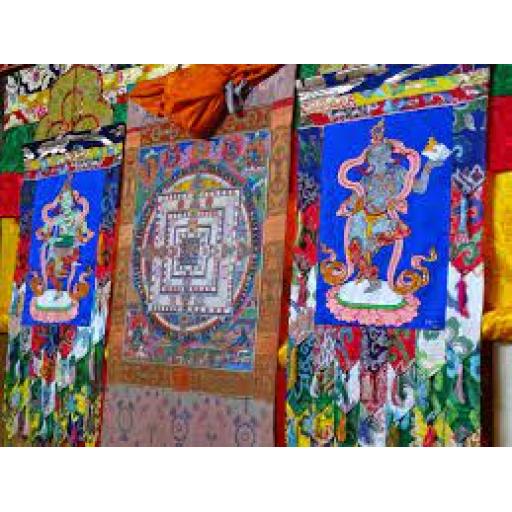
Wall hangings are a popular decorative item in many cultures, and they hold special significance in Buddhism. In Buddhist practice, wall hangings are often adorned with religious symbols and images that represent various aspects of Buddhist philosophy and teachings. These images can be a powerful tool for promoting mindfulness, inspiring reflection, and cultivating a deeper understanding of Buddhist principles.
One of the most common symbols found on Buddhist wall hangings is the lotus flower. The lotus is an important symbol in Buddhism, representing purity, spiritual awakening, and rebirth. The lotus flower is said to grow from the murky waters of the pond, yet it remains pure and untouched by the impurities of the water. This symbolizes the Buddhist belief that one can rise above the suffering of the world and attain enlightenment.
Another common symbol found on Buddhist wall hangings is the Buddha image. The Buddha is the central figure in Buddhism and represents the ideal of spiritual attainment. Depictions of the Buddha are often used as a visual reminder to practitioners of the principles and teachings he embodied.
Buddhist wall hangings may also include other images and symbols, such as the Dharma wheel, the Eight Auspicious Symbols, or the mantra "Om Mani Padme Hum." These symbols are used to convey different aspects of Buddhist philosophy and can help practitioners deepen their understanding of Buddhist teachings.
In addition to their symbolic significance, Buddhist wall hangings also serve as a way to create a peaceful and serene environment for meditation and reflection. The images and symbols on the wall hangings can help practitioners focus their minds and create a calming atmosphere that is conducive to contemplation and spiritual practice.
Wall hangings hold significant importance in Buddhism, as they are used to convey symbolic representations of Buddhist principles and teachings. By incorporating these decorative items into teaching plans, teachers can help students deepen their understanding of Buddhist culture and philosophy while creating a peaceful and inspiring learning environmen
IV. Resin Buddha (Duration: 30 minutes)
- Explain the significance of Buddha statues in Buddhism
- Discuss the different types of Buddha statues
- Show examples of resin Buddha statues and their meaning
- Allow students to create their own resin Buddha statues
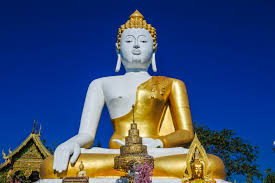
Buddha statues hold great significance in Buddhism as they are believed to represent the Buddha himself, the central figure of the religion. The Buddha, also known as Siddhartha Gautama, is revered as the teacher and founder of Buddhism, and his teachings have guided millions of people towards spiritual enlightenment.
The Buddha statue serves as a reminder of the Buddha’s teachings, and it is believed to possess spiritual power that can inspire devotion, meditation, and a deeper understanding of Buddhist principles. Buddha statues come in various sizes, poses, and styles, each with their own unique significance and symbolism.
Here are some of the different types of Buddha statues:
-
Seated Buddha: This is the most common type of Buddha statue, and it depicts the Buddha seated in the lotus position with his hands in a meditative posture. This pose represents the Buddha’s enlightenment and his ability to remain calm and centered in the face of suffering.
-
Standing Buddha: This type of statue depicts the Buddha standing with his hands either in a gesture of reassurance or in a pose of meditation. Standing Buddha statues are often found in temples and are associated with the Buddha’s teachings and guidance.
-
Reclining Buddha: This type of statue depicts the Buddha lying down, with his head resting on his right hand and his left hand resting on his body. This pose represents the Buddha’s entry into nirvana or enlightenment, and it is associated with the end of suffering.
-
Laughing Buddha: This statue depicts a rotund, jolly figure with a big belly and a smiling face. This figure is known as Budai or the "happy monk," and it represents contentment and abundance.
-
Medicine Buddha: This statue depicts the Buddha holding a bowl of healing herbs, and it is associated with healing and the removal of suffering. The Medicine Buddha is also believed to possess spiritual power that can aid in the healing of physical and mental ailments.
Buddha statues hold great significance in Buddhism, as they serve as a physical reminder of the Buddha's teachings and embody the spiritual qualities that practitioners seek to cultivate. By incorporating different types of Buddha statues into teaching plans, educators can help students deepen their understanding of Buddhist culture and philosophy while fostering a deeper sense of mindfulness and inner peace.
V. Singing Bowl and Mala Beads (Duration: 30 minutes)
- Explain the significance of singing bowls and mala beads in Buddhism
- Demonstrate how to use a singing bowl and mala beads for meditation
- Allow students to practice using singing bowls and mala beads
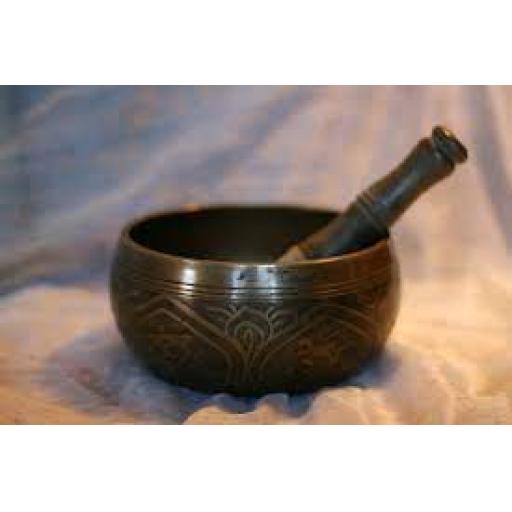
Singing bowls and mala beads are both important tools used in Buddhist meditation and mindfulness practices.
Singing bowls are metal bowls that produce a resonant sound when struck or played with a mallet. They are used in meditation and prayer to promote a sense of relaxation and inner peace. The sound of the singing bowl is believed to have healing properties and can help practitioners achieve a deeper state of meditation.
Mala beads, also known as prayer beads, are a string of beads used to count repetitions of mantras or prayers. Mala beads are traditionally made from 108 beads, with a larger bead or tassel at the end. They are used in Buddhist meditation practices to help focus the mind and cultivate mindfulness.
To use a singing bowl for meditation, follow these steps:
-
Sit comfortably in a quiet space with your singing bowl in front of you.
-
Hold the mallet loosely in your hand and strike the bowl gently. You can also run the mallet around the rim of the bowl to produce a sustained sound.
-
Close your eyes and focus on the sound of the singing bowl. Listen to the sound as it fades away, and allow yourself to become fully immersed in the sound.
-
As you continue to listen to the sound of the singing bowl, focus on your breath and allow yourself to enter a state of deep relaxation and inner peace.
To use mala beads for meditation, follow these steps:
-
Sit comfortably in a quiet space with your mala beads in your hand.
-
Hold the first bead between your thumb and index finger and recite your chosen mantra or prayer. You can repeat the mantra silently in your mind or recite it aloud.
-
Move to the next bead and repeat the process, continuing until you have completed the entire string of beads.
-
When you reach the end of the mala, you can either turn it around and begin again, or simply set it aside and take a few moments to reflect on your meditation.
Incorporating singing bowls and mala beads into teaching plans can help students develop their mindfulness and meditation skills, and provide them with valuable tools for managing stress and anxiety. By demonstrating how to use these tools effectively, educators can help students achieve a deeper sense of inner peace and calm.
VI. Prayer Flags and Offering Bowls (Duration: 30 minutes)
- Explain the significance of prayer flags and offering bowls in Buddhism
- Show examples of prayer flags and offering bowls and their meaning
- Allow students to create their own prayer flags and offering bowls

Prayer flags and offering bowls are important symbols in Buddhist culture and are often used in various practices and rituals.
Prayer flags are colorful rectangular pieces of cloth that are typically printed with sacred Buddhist symbols, mantras, and prayers. They are used in various ceremonies and are believed to bring blessings and good fortune. Prayer flags are hung outside homes, temples, and other sacred places, where they flutter in the wind, spreading their blessings to all who pass by.
The colors of prayer flags have symbolic meanings as well. Blue represents the sky, white represents air and clouds, red represents fire, green represents water, and yellow represents earth. Together, these colors are believed to represent the balance and harmony of the natural world.
Offering bowls, also known as water bowls, are small bowls used to make offerings to the Buddha and other spiritual beings. They are typically made of metal or other natural materials and are often decorated with intricate designs and symbols. The bowls are filled with water, flowers, or other offerings, which are then placed in front of statues or images of the Buddha.
Offering bowls are symbolic of the act of generosity and the practice of giving, which is a fundamental aspect of Buddhist teachings. By making offerings, practitioners cultivate a sense of generosity and compassion, and develop their understanding of the interconnectedness of all beings.
Here are some examples of prayer flags and offering bowls and their meanings:
-
Lung ta prayer flags: These are prayer flags that depict the wind horse, a powerful symbol of energy and transformation. The wind horse is believed to carry prayers and blessings to all corners of the world.
-
Tara prayer flags: These prayer flags depict the goddess Tara, who embodies compassion and protection. Tara is believed to help those who call upon her for assistance.
-
Lotus offering bowl: This offering bowl is shaped like a lotus flower, which is a symbol of purity and enlightenment. The lotus flower is believed to represent the potential for spiritual growth and transformation.
-
Dragon offering bowl: This offering bowl is decorated with a dragon, which is a powerful symbol of strength and vitality. Dragons are believed to bring good luck and protection.
Incorporating prayer flags and offering bowls into teaching plans can help students understand the symbolism and meaning behind these important Buddhist symbols. By exploring their significance, students can deepen their understanding of Buddhist teachings and develop their own spiritual practices.
VIII. Brass Om (Duration: 20 minutes)
The Brass Om symbol, also known as the Aum or Omkar symbol, is a sacred symbol in many Eastern religions, including Buddhism. It is considered to be the sound of the universe and is believed to represent the essence of all creation.
In Buddhism, the Brass Om symbol is often used in meditation and chanting practices. It is believed to help practitioners connect with the divine and achieve a sense of inner peace and harmony.
The symbol is composed of three parts: the curved top, the straight stem, and the crescent-shaped base. The curved top represents the waking state, the straight stem represents the dreaming state, and the crescent-shaped base represents the deep sleep state. Together, these three states represent the totality of existence.
The Brass Om symbol is also associated with the concept of impermanence and the idea that all things are constantly changing. By meditating on the symbol, practitioners can gain a deeper understanding of this fundamental Buddhist teaching and develop their own sense of spiritual awareness.
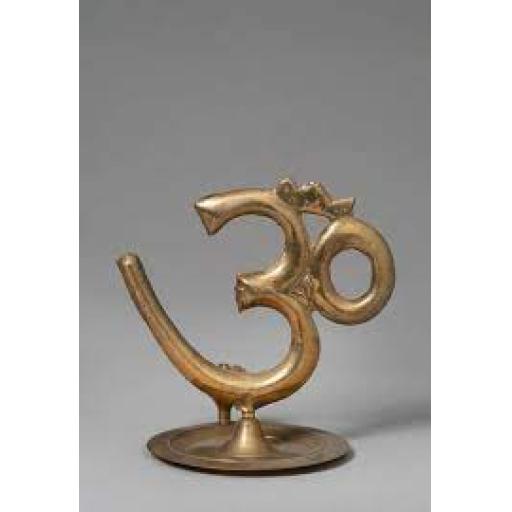
Here are some examples of Brass Om symbols and their meanings:
-
Brass Om wall hanging: This is a decorative wall hanging that features the Brass Om symbol. It is often used to decorate meditation spaces and to create a calming and peaceful environment.
-
Brass Om pendant: This is a small Brass Om symbol that is worn as a pendant on a necklace. It is believed to bring a sense of inner peace and harmony to the wearer.
-
Brass Om prayer wheel: This is a handheld prayer wheel that features the Brass Om symbol. It is used in Buddhist prayer practices and is believed to bring blessings and good fortune.
-
Brass Om incense burner: This is a decorative incense burner that is shaped like the Brass Om symbol. It is often used in meditation practices to create a calming and peaceful environment.
Incorporating the Brass Om symbol into teaching plans can help students understand the symbolism and meaning behind this important Buddhist symbol. By exploring its significance, students can deepen their understanding of Buddhist teachings and develop their own spiritual practices
- Explain the significance of the Brass Om symbol in Buddhism
- Show examples of Brass Om symbols and their meaning
- Allow students to create their own Brass Om symbols
IX. Conclusion (Duration: 10 minutes)
- Recap the key principles and practices of Buddhism
- Encourage students to use the tools and resources they learned in their daily lives
- Invite students to share their thoughts and experiences
FAQs:
-
How can I incorporate Buddhism in my primary school curriculum? Answer: You can introduce Buddhism through various subjects, including history, social studies, and world religions.
-
What are the benefits of teaching Buddhism to primary school students? Answer: Teaching Buddhism can promote tolerance, compassion, and mindfulness among students.
-
Do I need to be a Buddhist to teach Buddhism in primary schools? Answer: No, you do not need to be a Buddhist to teach Buddhism. However, it is essential to have a basic understanding of the religion's principles and practices.
-
Are these tools necessary to teach Buddhism in primary schools? Answer: While these tools are not necessary, they can enhance the learning experience for students and make it more engaging and interactive.
-
How can I adapt this lesson plan for different age groups? Answer: You can modify the activities and the level of discussion to suit the age and maturity level of the students.
-
Conclusion:
Teaching Buddhism in primary schools can be a rewarding experience for educators and students alike. By using various tools and resources, teachers can make the learning experience more engaging, interactive, and enjoyable. This teaching plan provides a comprehensive guide on how to incorporate different tools, including prayer wheels, wall hangings, resin Buddha, singing bowls, mala beads, prayer flags, offering bowls, lotus flowers, Majera symbols, and brass Om, into the lesson plan. By introducing students to Buddhism, we can promote tolerance, compassion, and mindfulness among the younger generation.















